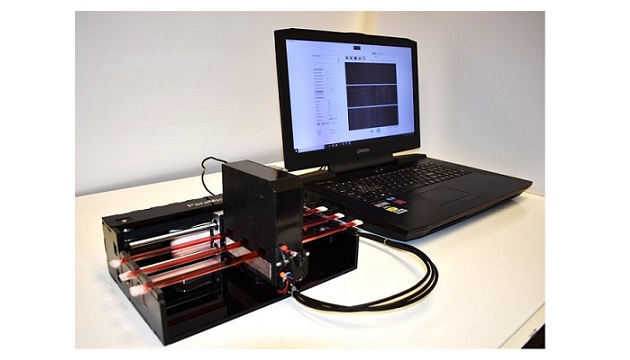An inexpensive, portable platform, that can detect motile parasites in bodily fluids rapidly, has been developed by Researchers at the UCLA Henry Samueli School of Engineering. Using the new platform, more than 3 milliliters (ml) of a bodily fluid sample can be imaged and analyzed within 20 minutes, providing a throughput that is orders of magnitude better than traditional optical microscopy-based examination.
This label-free computational imaging platform automatically detects and counts motile microorganisms using holographic speckle analysis. It records high-frame-rate videos of the holographic patterns of the samples illuminated with laser light. Then, a motion analysis algorithm analyzes these captured videos at the microscale and converts the locomotion of the target parasites within the sample into a signal spot, which is detected and counted using artificial intelligence.
“Our platform can be considered as a motion detector in the microscopic world, which locks onto any moving objects within the sample,” said researcher Yibo Zhang. “Locomotion is used as both a biomarker and a contrast mechanism to distinguish parasites from normal cells.”
The research was led by Aydogan Ozcan, Chancellor’s Professor of Electrical and Computer Engineering at UCLA and the associate director of the California NanoSystems Institute at UCLA, along with professor Kent Hill.
“Although motility is a common feature of various parasites and other disease-causing microorganisms, its use as a fingerprint for diagnosis is highly underexplored,” Ozcan said.
Proof of concept was demonstrated using Trypanosoma parasites, which cause sleeping sickness and Chagas disease. Using a holographic speckle analysis algorithm combined with deep learning-based classification, the researchers demonstrated label-free detection of trypanosomes within spiked whole blood and artificial cerebrospinal fluid (CSF) samples, achieving a limit of detection of 10 trypanosomes per ml of whole blood (about five times better than current state-of-the-art parasitological methods) and three trypanosomes per ml of CSF.
This improved detection limit could enable earlier detection of sleeping sickness and Chagas disease, improving cure rates and reducing prevalence of these diseases. The researchers also demonstrated the use of their device to detect Trichomonas vaginalis, demonstrating that their technique is applicable to various parasites and motile microorganisms.
The device is compact and lightweight, and the cost of the prototype is less than $1850, which could be reduced to less than $800 when manufactured in larger volumes, the researchers said. “Thanks to its high sensitivity, ease-of-use, reduced cost, and portability, we believe our technique can improve parasite screening efforts, especially in resource-poor areas and endemic regions,” said researcher Hatice Ceylan Koydemir.








